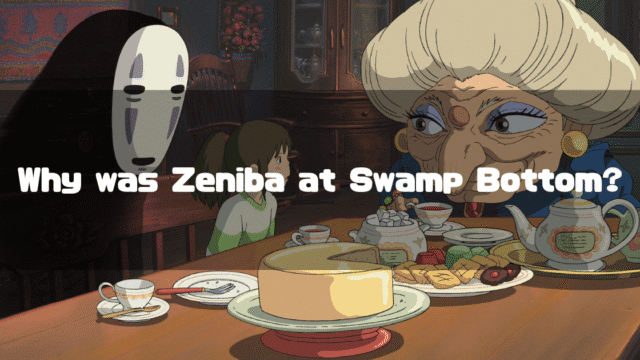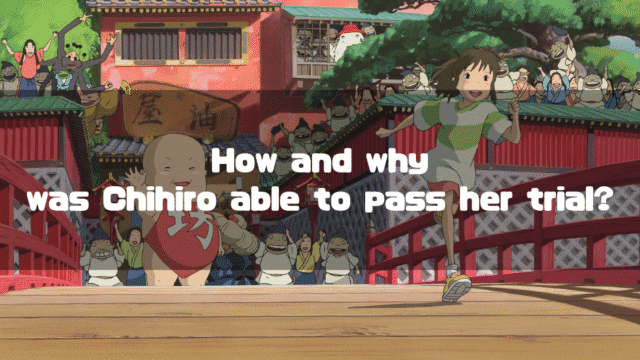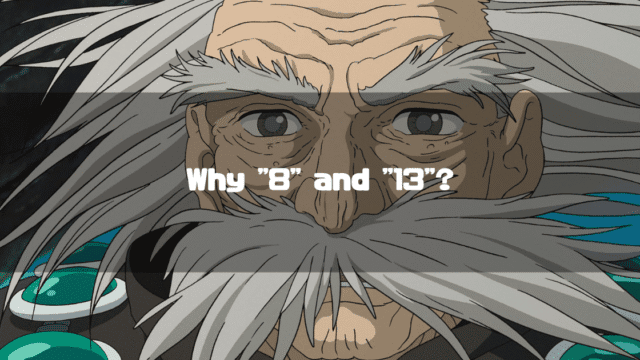Spirited Away(Official Studio Ghibli Website) is a feature-length animated film directed by Hayao Miyazaki, released in 2001.
Various urban legends surround Studio Ghibli’s works, and even on this blog, I’ve written things that could be considered urban legends under the guise of analysis.
When people talk about urban legends, it’s often in the context of “is it true or not?” or “do you believe it or not?” But personally, I think the most important aspect of an urban legend is “is it interesting or not?“
From that perspective, the most brilliantly interesting Studio Ghibli urban legend is the “Phantom Ending of Spirited Away.”
This time, I’ll explore its appeal while revisiting the outline of this urban legend.
*The following text is based on the premise that the “phantom ending” is a phantom and does not actually exist.
*This article is an English translation of the original Japanese article, https://www.sifrinsight.com/spirited-away-haku/.
Let an AI walk you through the highlights of this post in a simple, conversational style.
-
Details of the Phantom Ending
It has spread online as a “phantom ending” to Spirited Away that doesn’t actually exist but has sparked the memories of many people. -
Clever Memory Manipulation
The cleverness of this urban legend lies in its reconstruction based on scenes actually depicted in the film (references to movers and images of a river), causing the human brain to “conveniently splice parts of memory” to create a new scene. -
Examples of Fabricated Memories: “Terminator 2,” “Patlabor 2”
Specific examples from the author of creating “false memories,” such as mixing past movie scenes and remembering a scene that never existed as something they “saw.” -
The Fragility of Memory and the Allure of Urban Legends
The phantom ending is a prime example of how the “creator” skillfully used the characteristics of human memory, piecing together existing scenes to establish the legend, demonstrating how uncertain and manipulable human memory can be.
The Phantom Ending of Spirited Away

Outline of the Urban Legend
First, let’s recall the ending of Spirited Away that many of us think we know. The details are as follows:
In the car, Chihiro notices that the hair tie she was wearing before has changed to the one she received from Zeniba, and she finds it strange (though she doesn’t remember why).
On the way to their new house, they see from a hill that the moving company has already arrived, and her mother gets angry at her father, saying, “The movers are already here!”
After arriving at the new house, one of the movers scolds them, saying, “We can’t have you being late.”
As Chihiro wanders around the new house by herself, she notices a small stream with a short bridge over it.
While looking at the river from the bridge, Chihiro has a sudden moment of realization, as if she understood that this river is the reincarnation of Haku, his new home. The story ends on this meaningful note.
How about that? In fact, this very ending is the famous “phantom ending” urban legend. It seems to have originated from a Channel 2(2ちゃんねる) thread in 2014 (Reference: Lost Media Translation Japanese Unofficial Wiki). I myself remember seeing this ending on a summary website a long time ago.
The actual ending is much simpler, as follows:
When Chihiro and her parents exit the tunnel, they find their car strangely covered in leaves. In contrast to her parents who head towards the car, Chihiro looks back at the tunnel as if trying to remember something. Suddenly called by her father, she snaps out of it and gets into the car, and the car drives away with the three of them.
The actual ending is like this; there are no movers and no small river. In fact, it’s so simple that it makes you wonder, “Was that really it?”
However, the bittersweetness of having basically forgotten what happened on the other side of the tunnel, and the hope symbolized by the glowing hair tie from Zeniba, are the true essence of that ending.
So, for me, this “phantom ending” is a very interesting urban legend. But what makes it so fascinating?
The Appeal of the Urban Legend
The greatest appeal of this urban legend is likely how a scene that shouldn’t exist is perfectly reproduced in one’s own mind.
And the reason this non-existent scene is reproduced in our minds lies in its cunning structure. In other words, as summarized below, this urban legend cleverly uses scenes and images that actually exist:
- The movers are not shown, but they are mentioned in the car at the beginning of the movie.
- There is a scene where they take a wrong turn and look up at their new neighborhood.
- A river doesn’t appear at the end, but a river does appear in Chihiro’s flashback scene.
We don’t know who first came up with this “phantom ending,” but that person must have been someone who deeply understood human memory and possessed excellent writing skills.
I believe it has a level of sophistication that sets it apart from urban legends like “Totoro was the God of Death.”
This concludes the story of the “phantom ending” of Spirited Away, but there’s a personal memory fabrication that this topic always reminds me of, so I’d like to share that as well.
Fabricated Memories

Terminator 2
In the early part of the movie Terminator 2: Judgment Day, John Connor, worried about his foster parents, calls his foster mother on the phone. The scene depicts the foster mother, who has already been copied by the T-1000, killing her husband while on the phone with John.
In the actual scene, the T-1000’s left arm transforms into a blade and pierces through the husband’s head. However, in my memory, it was a scene where its index finger sharpened into a needle and stabbed the top of his head.
Importantly, there’s a clear reason for this too. Towards the end of the story, there’s a scene where Sarah Connor is stabbed in the right shoulder by the T-1000, and it’s done with an index finger that has extended into a long needle (this is also a very memorable scene).
In other words, scenes that actually exist merged in my mind to conveniently create a new one.
Perhaps if you asked someone about the scene where the T-1000 kills John’s foster father, “Didn’t the index finger extend like a needle?” they might reply, “Yeah, that’s right!”
Human memory is indeed a fragile thing.
Patlabor 2: The Movie
There’s also a scene in Patlabor 2: The Movie that I was surprised to find I had fabricated myself.
In a scene where one of the main characters, Shinobu Nagumo, gets on an elevator, a little girl in a yellow dress also runs on to join her.
For a long time, I was convinced that this girl was holding a red balloon, and even now I can vividly recall this false memory. However, in reality, she isn’t holding a balloon at all.
The origin of this red balloon is from an episode called The Snow Rondo in the Patlabor OVA series. In that story, a red balloon is featured prominently, and there is a scene where a woman holds a red balloon.
For some reason, I had confused these two events and fabricated them into a single scene.
Both Patlabor 2: The Movie and The Snow Rondo have the common feature of snow being impressively depicted, and I think that also contributed to the fabrication of memory. There must be some kind of inevitability in the fabrication of memories.
That is all for the overview of the “Spirited Away phantom ending” and the thoughts that came with it. The wonder of this urban legend is, of course, its entertainment value, but I also think it lies in teaching us the fact that human “memory” is extremely fragile and manipulable.
Let’s cherish our memories. It’s difficult, but let’s try.
About the Author
Recent Posts
- 2025-10-21
Indiana Jones and the Dial of Destiny(2023): Full Synopsis & Analysis: Indy’s True Motive and the Enigma of Helena - 2025-10-15
Indiana Jones and the Dial of Destiny(2023):Historical Background-WWII, the Real Dr. Schmidt, the Siege of Syracuse, and the Antikythera Mechanism - 2025-10-08
Why Does Children Who Chase Lost Voices Feel So Ghibli-esque? [Makoto Shinkai’s “Tale of Farewell”] - 2025-10-07
5 Centimeters per Second: Characters, Voice Actors, Character Analysis and Character Map - 2025-10-06
5 Centimeters per Second: Full Synopsis, Analysis, Ending Explained & Character Map (Spoilers)





















